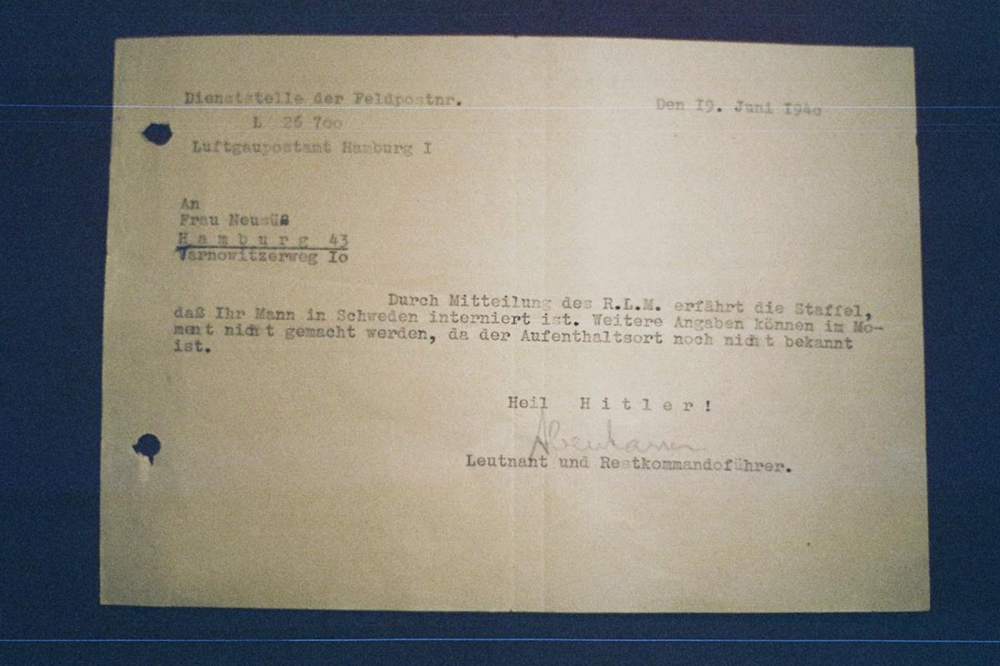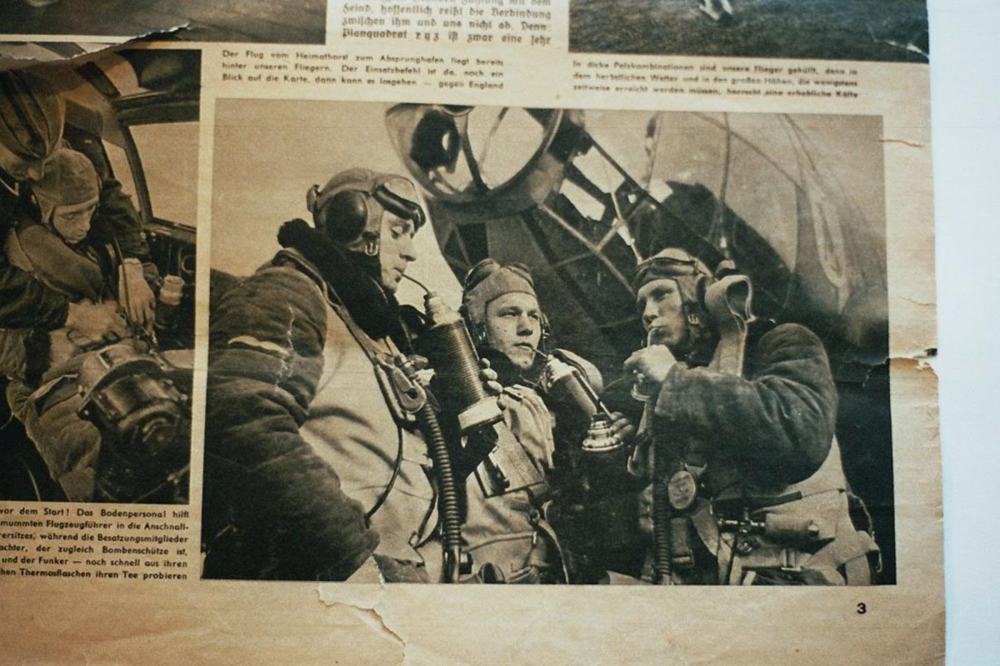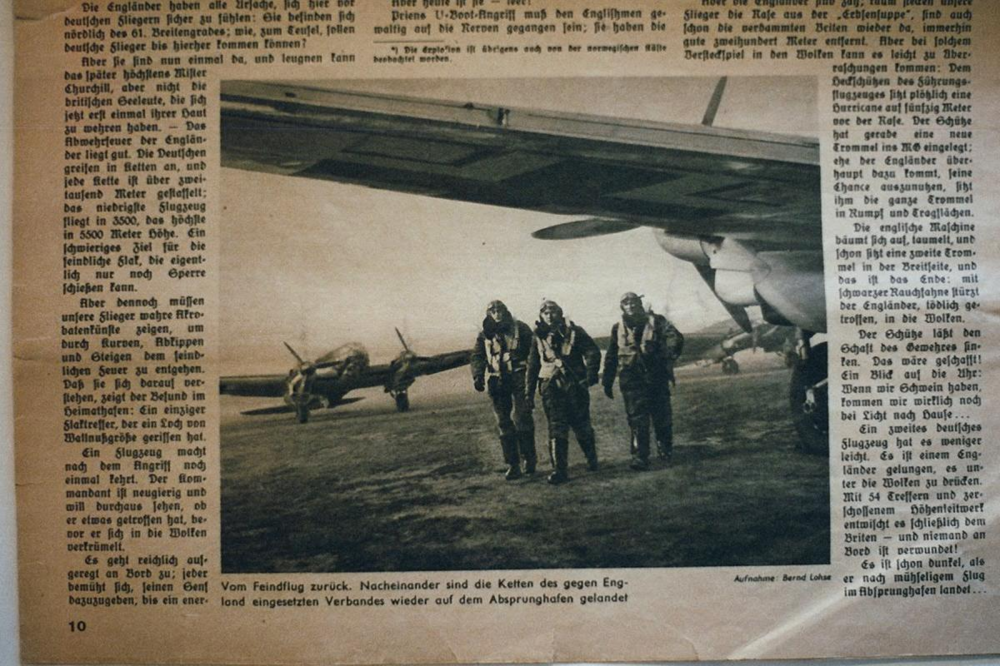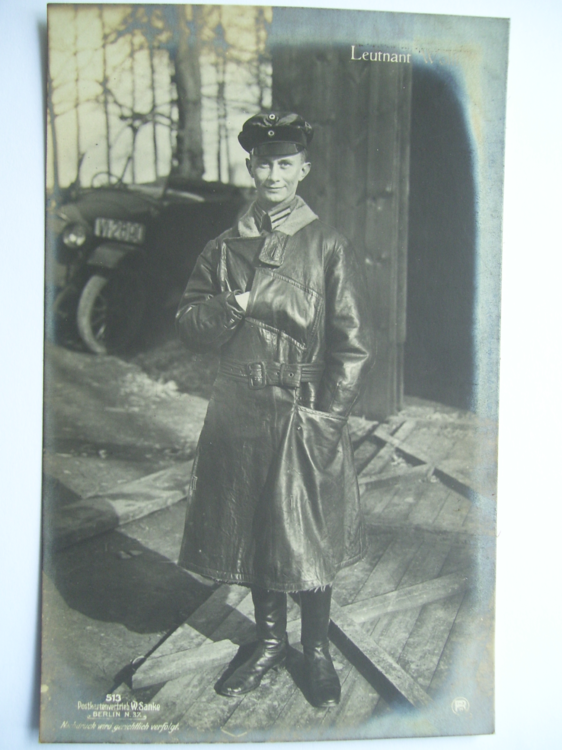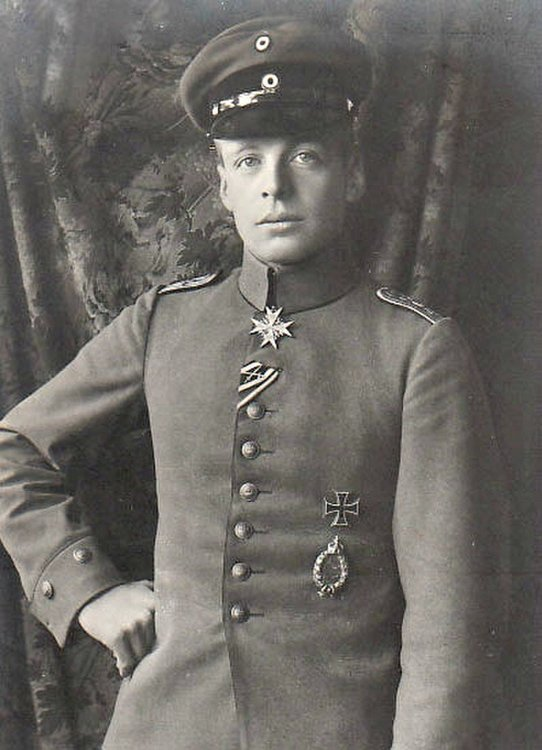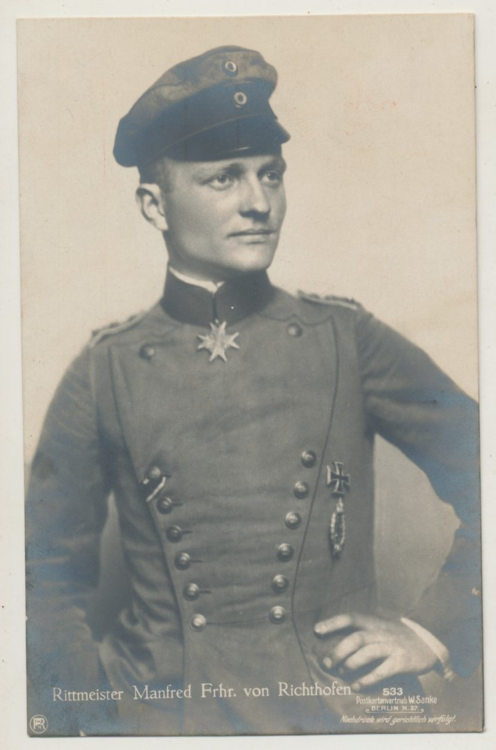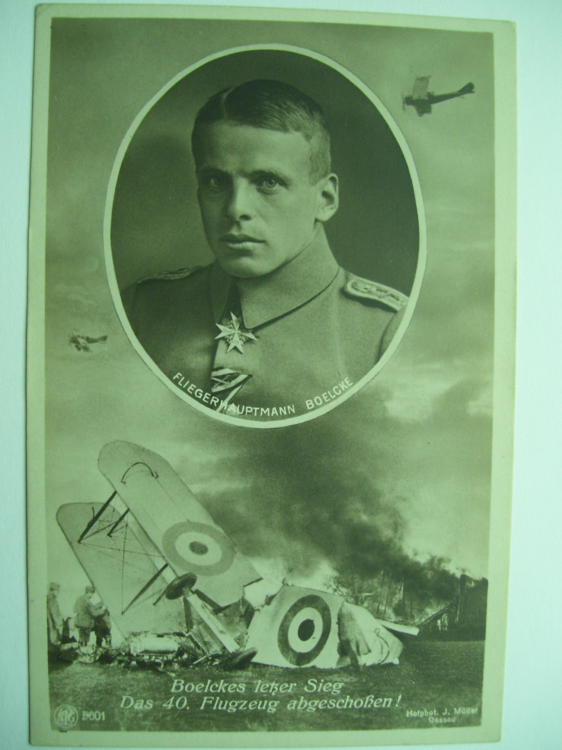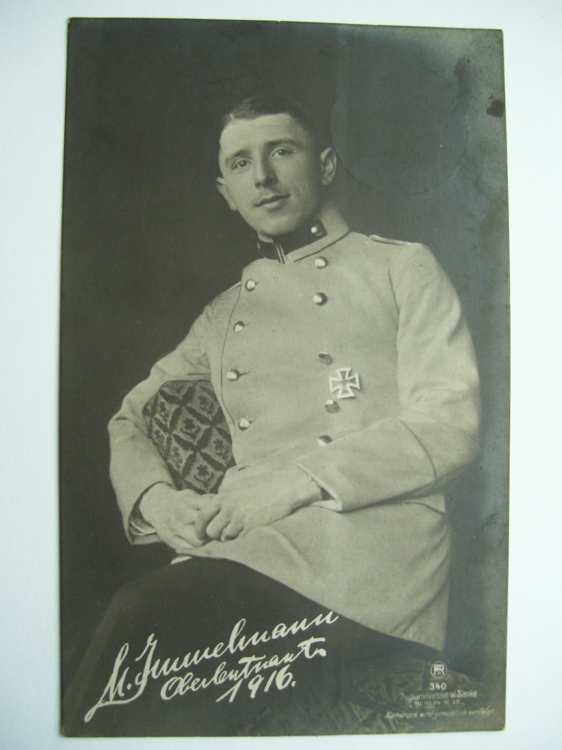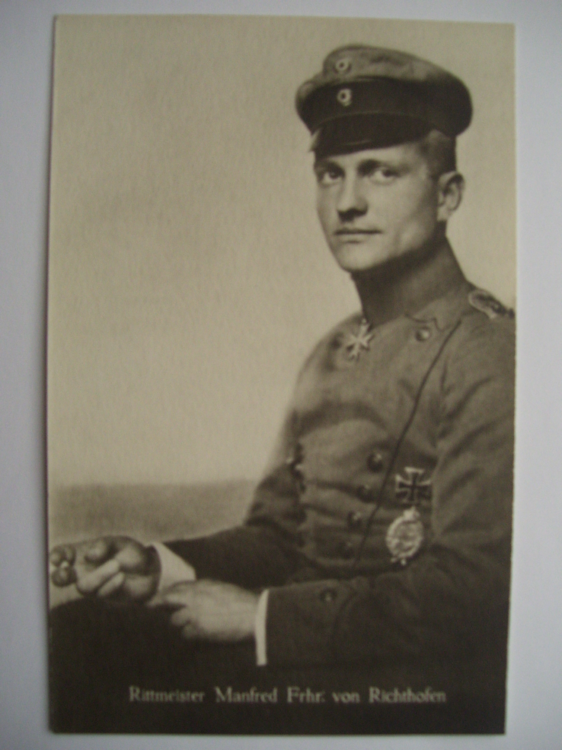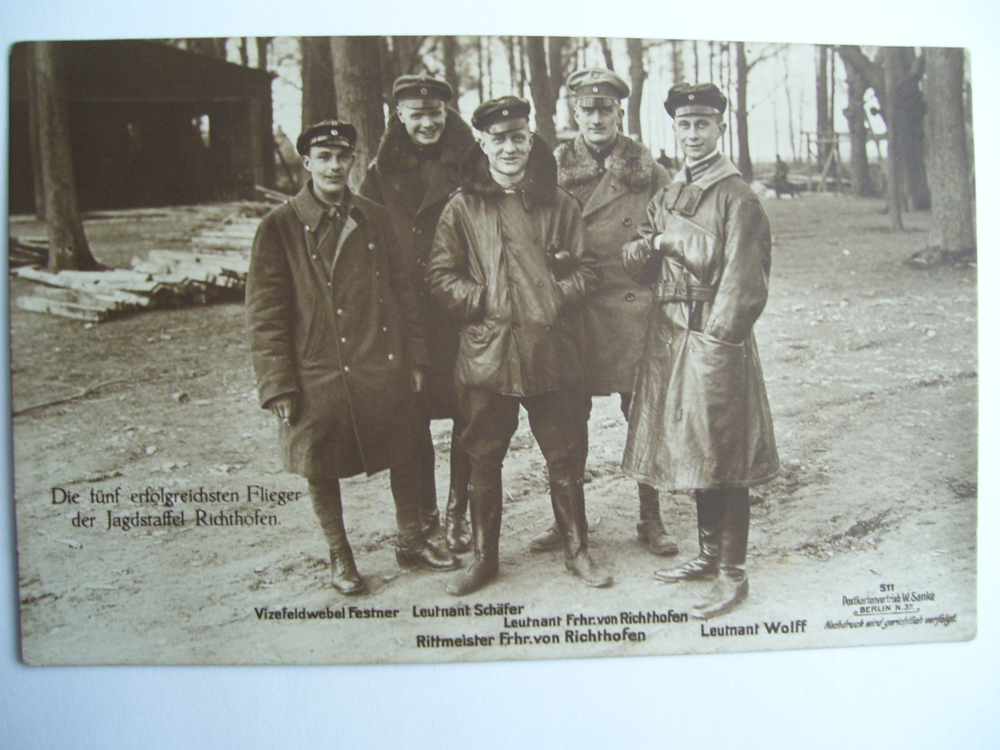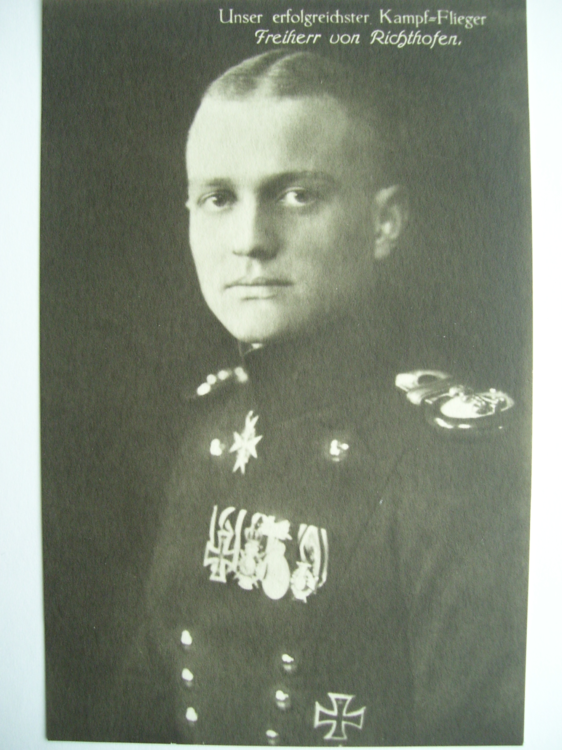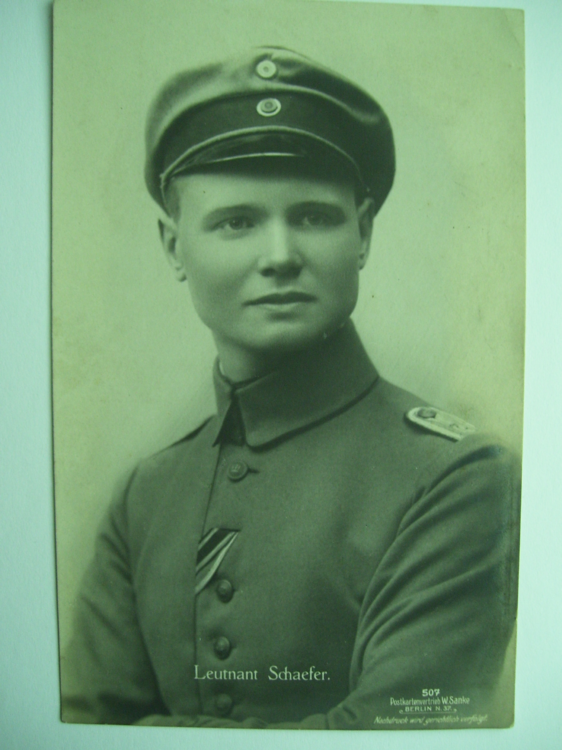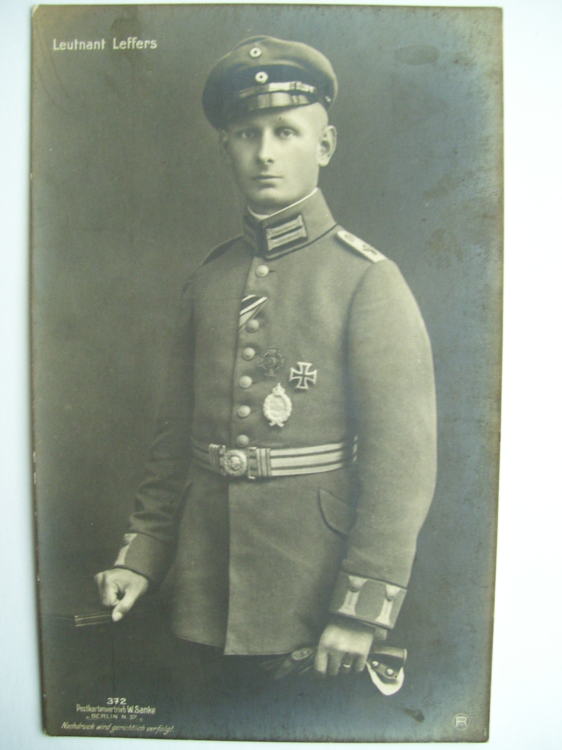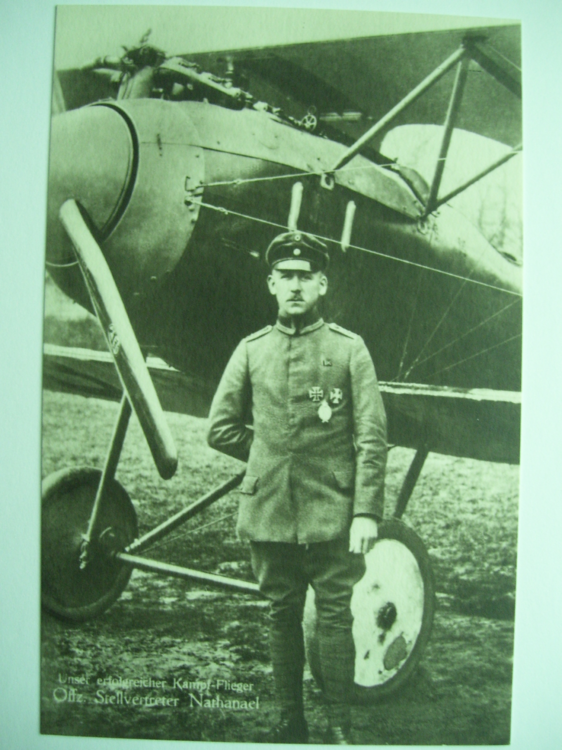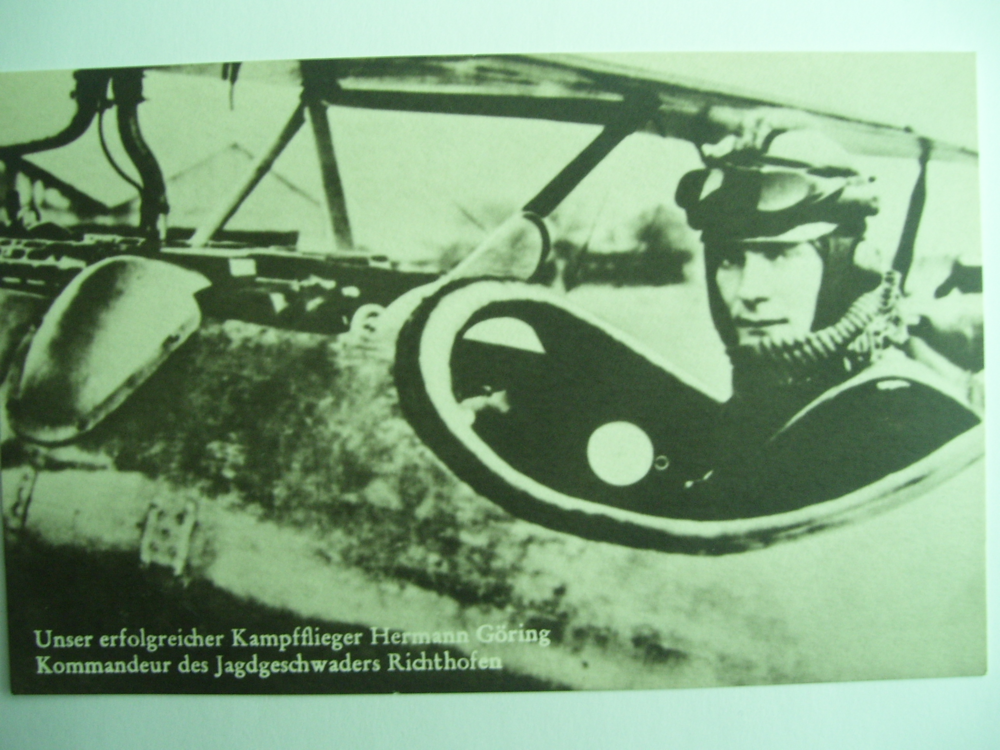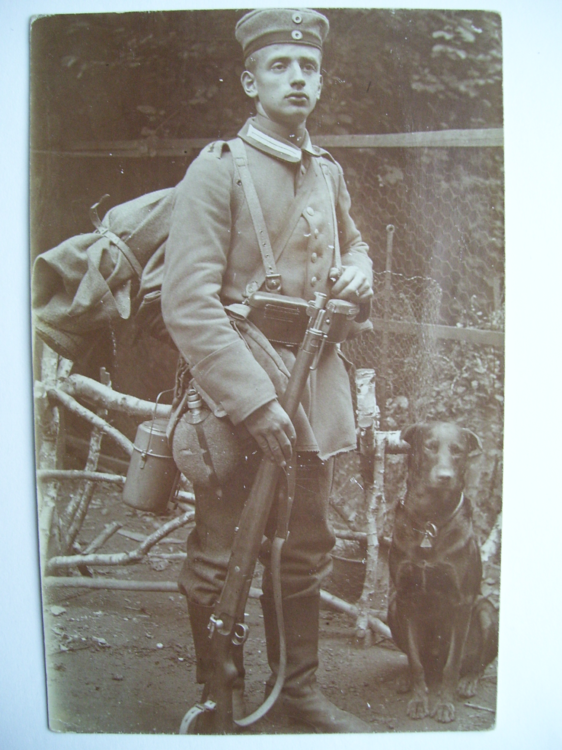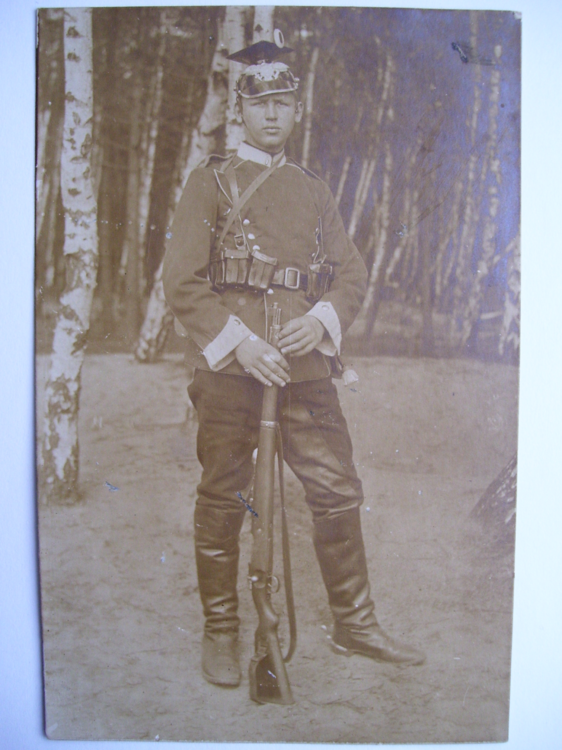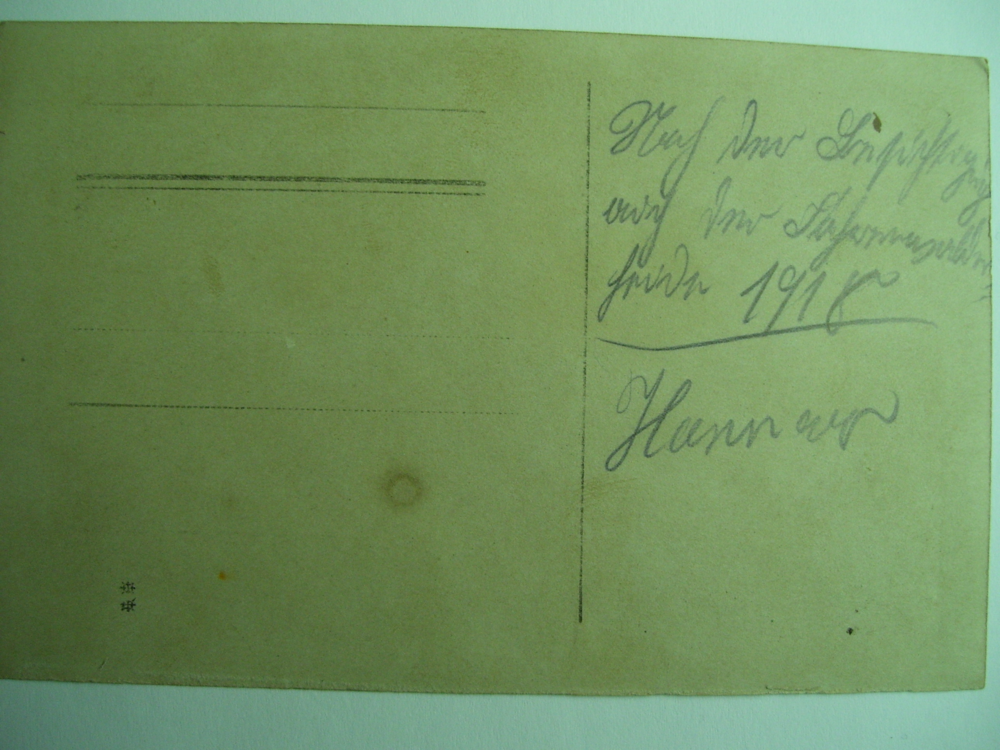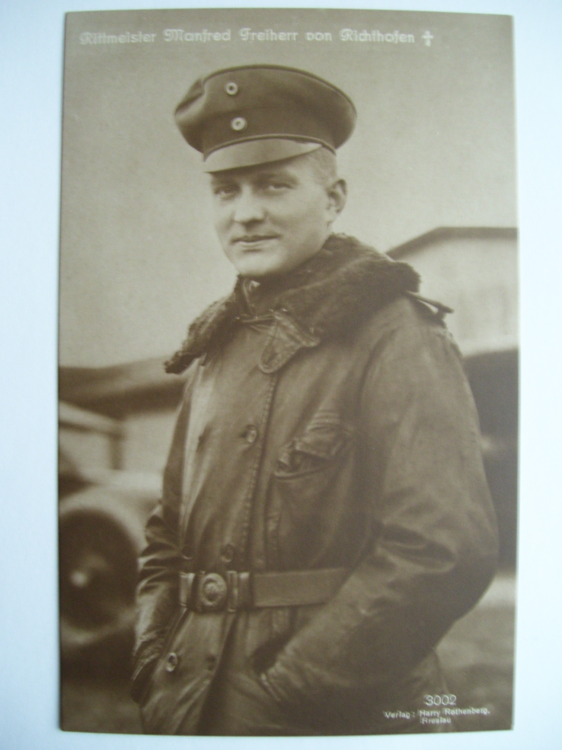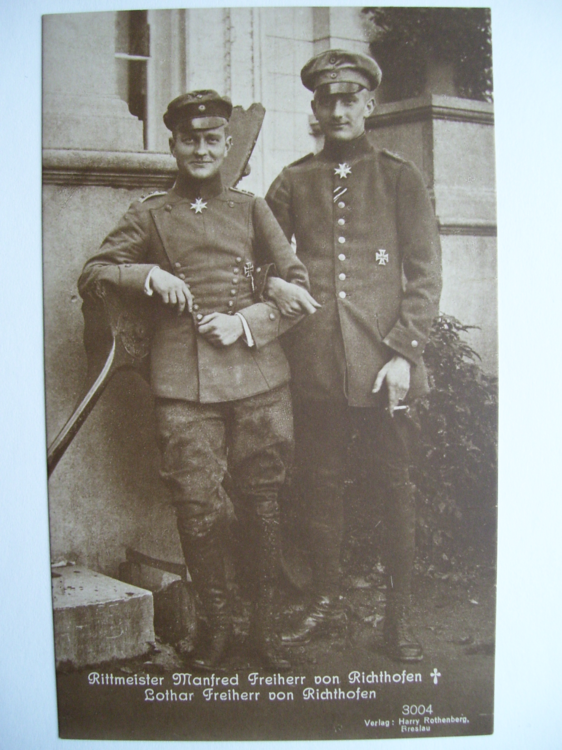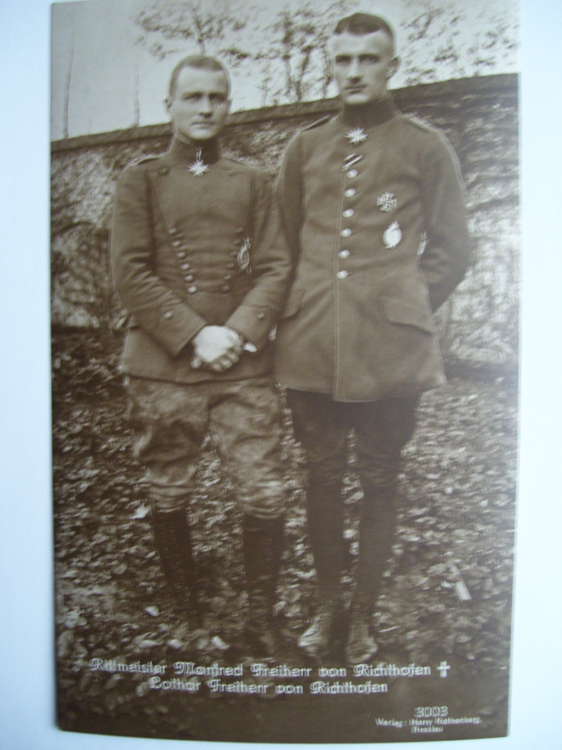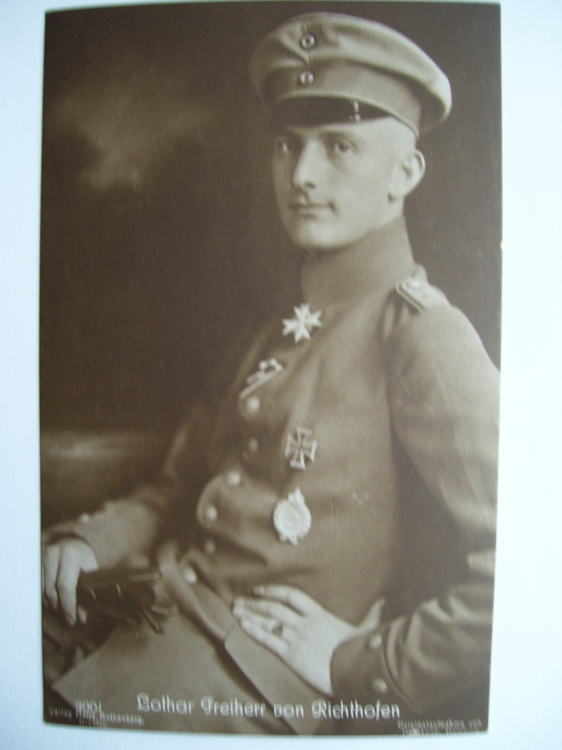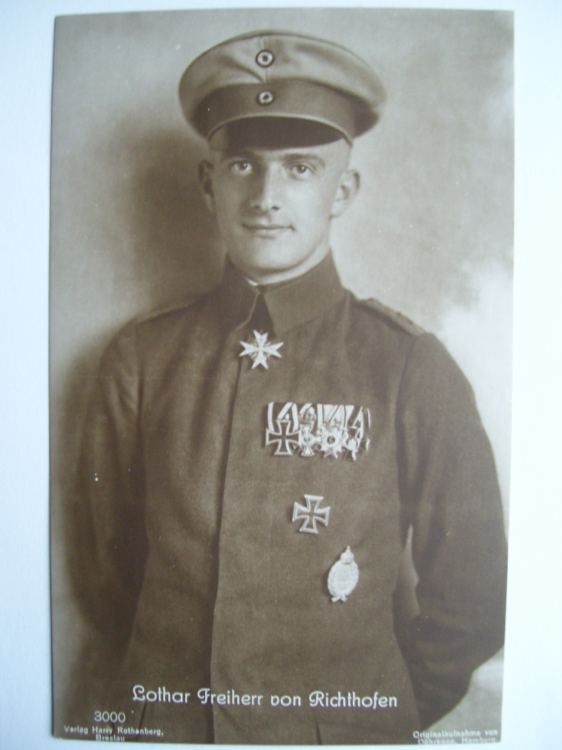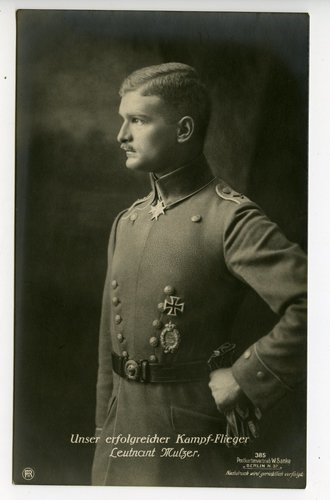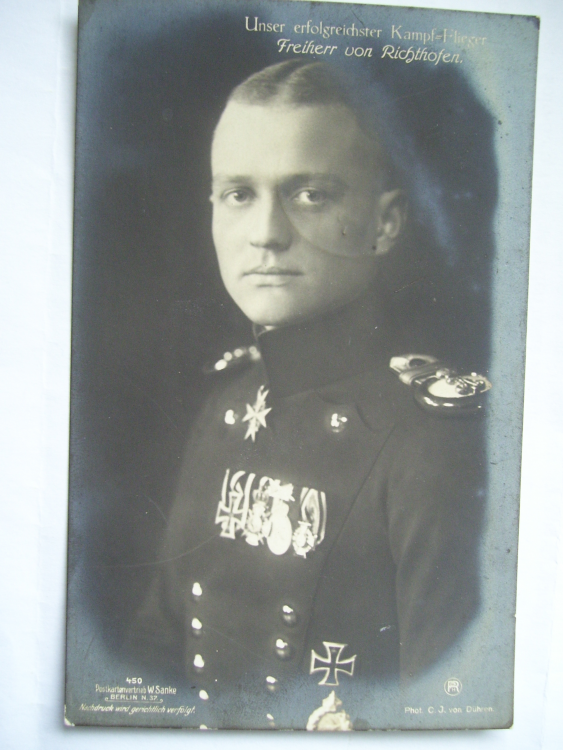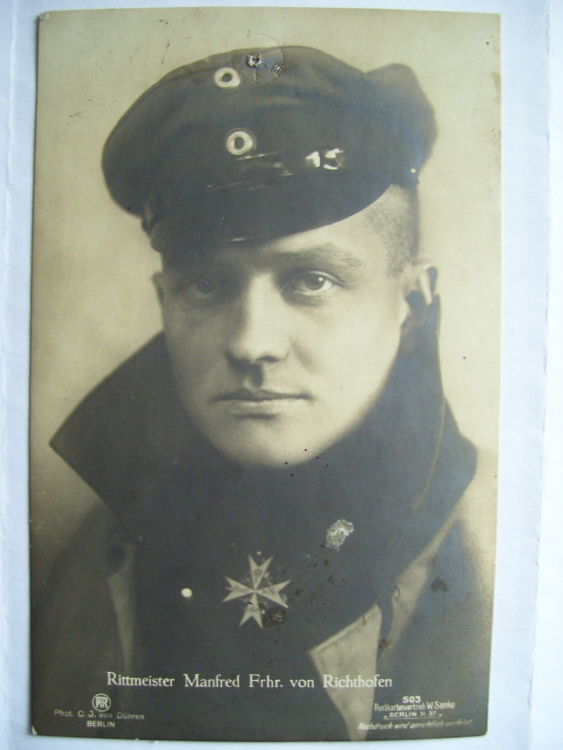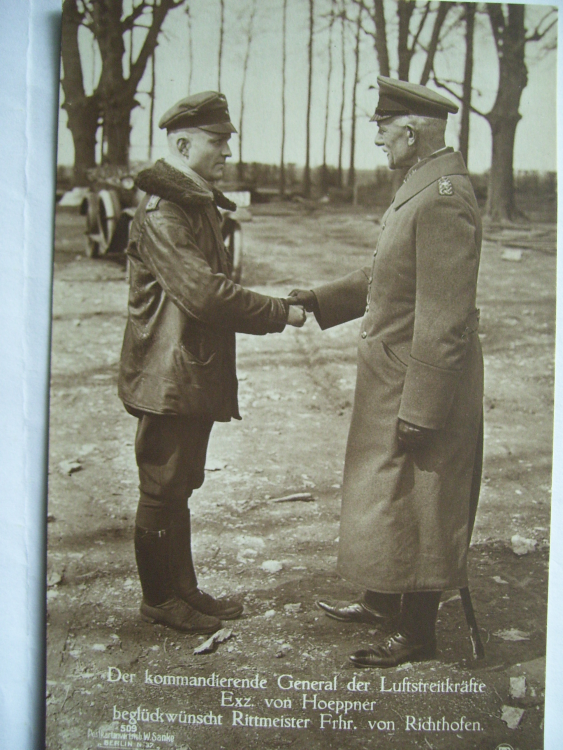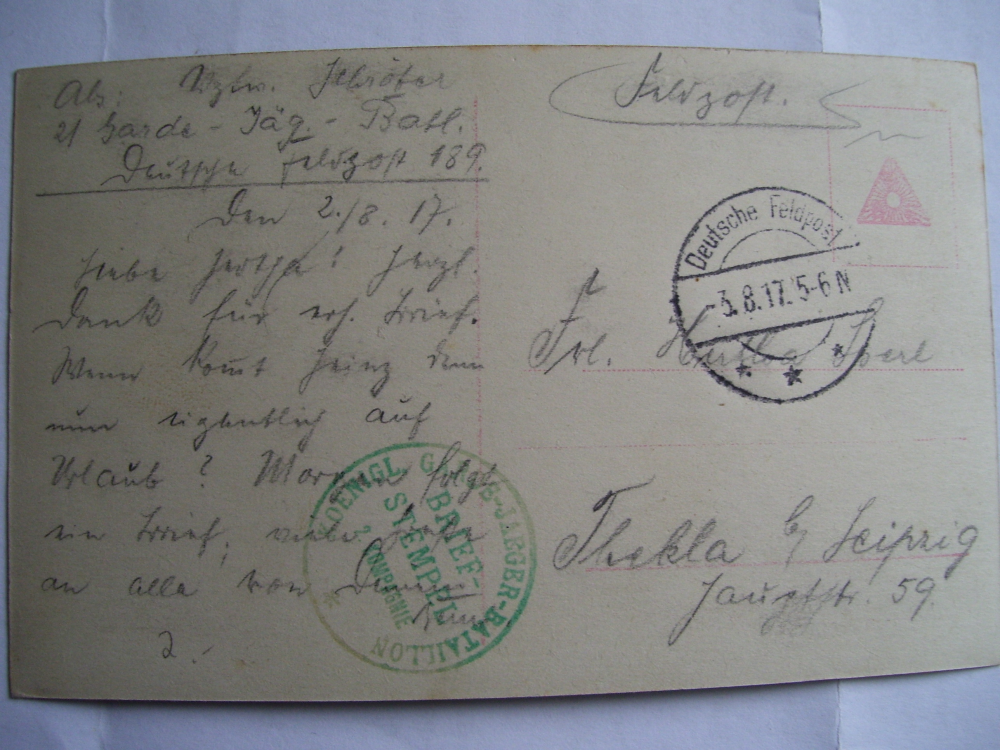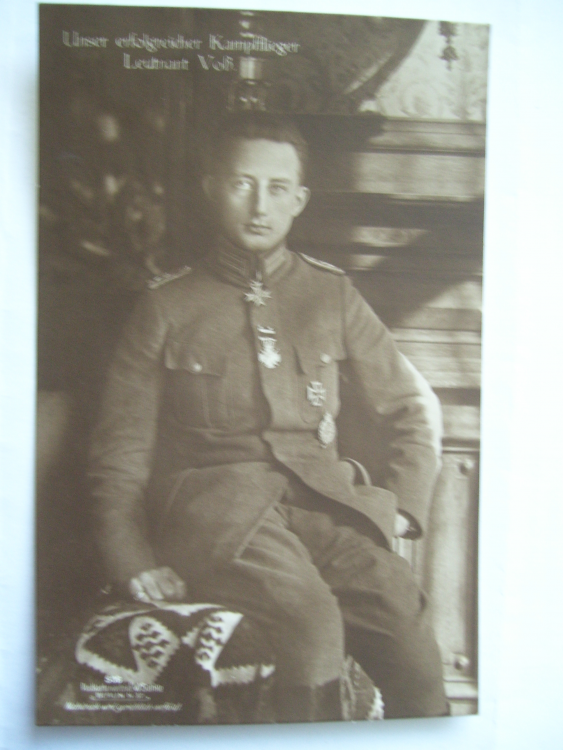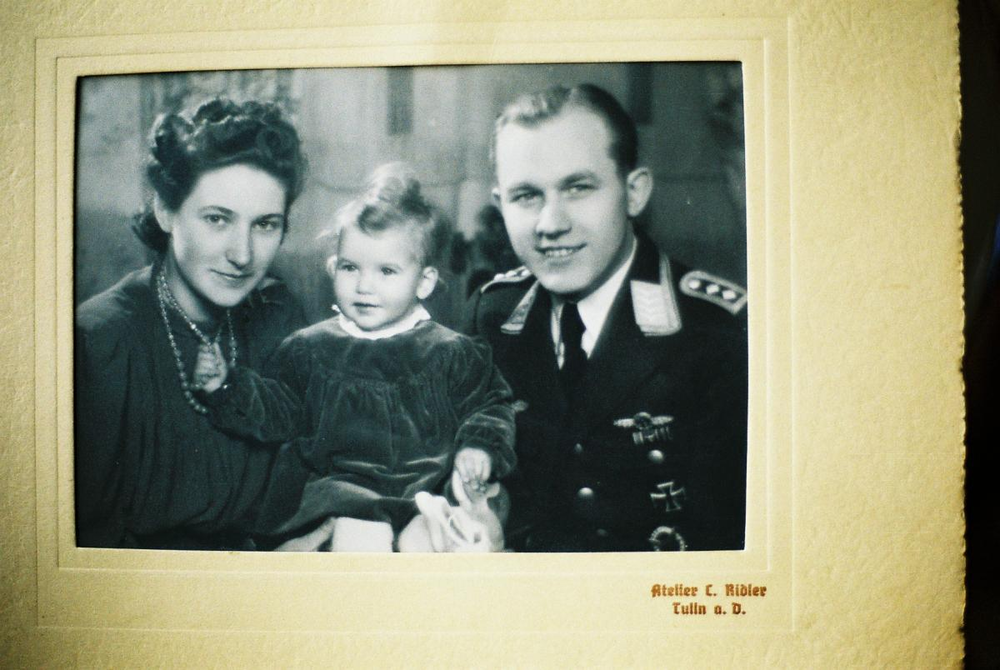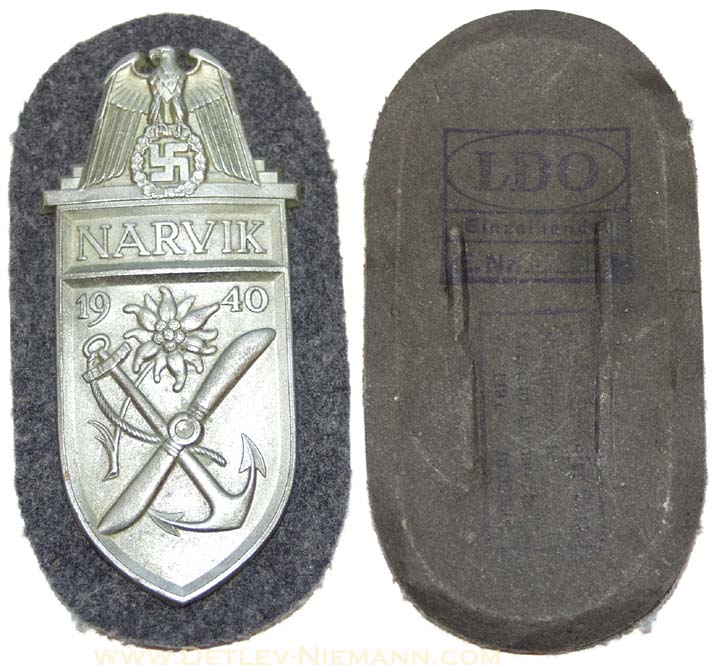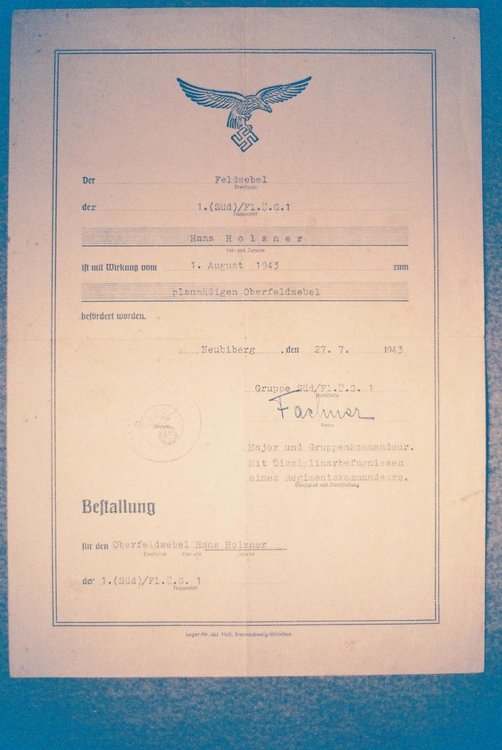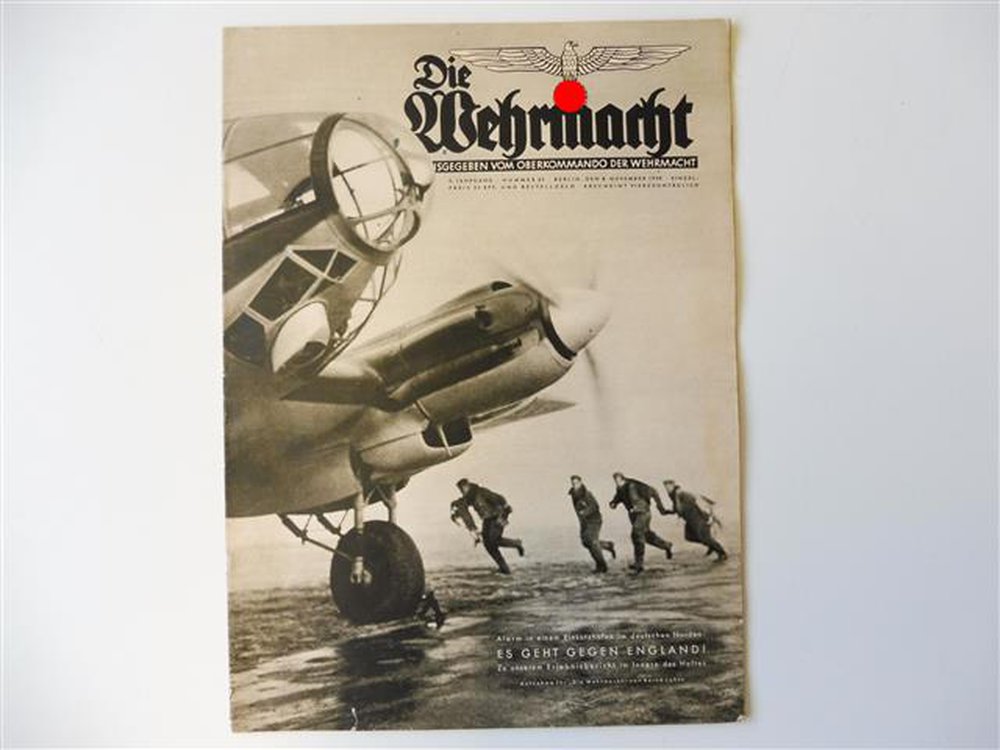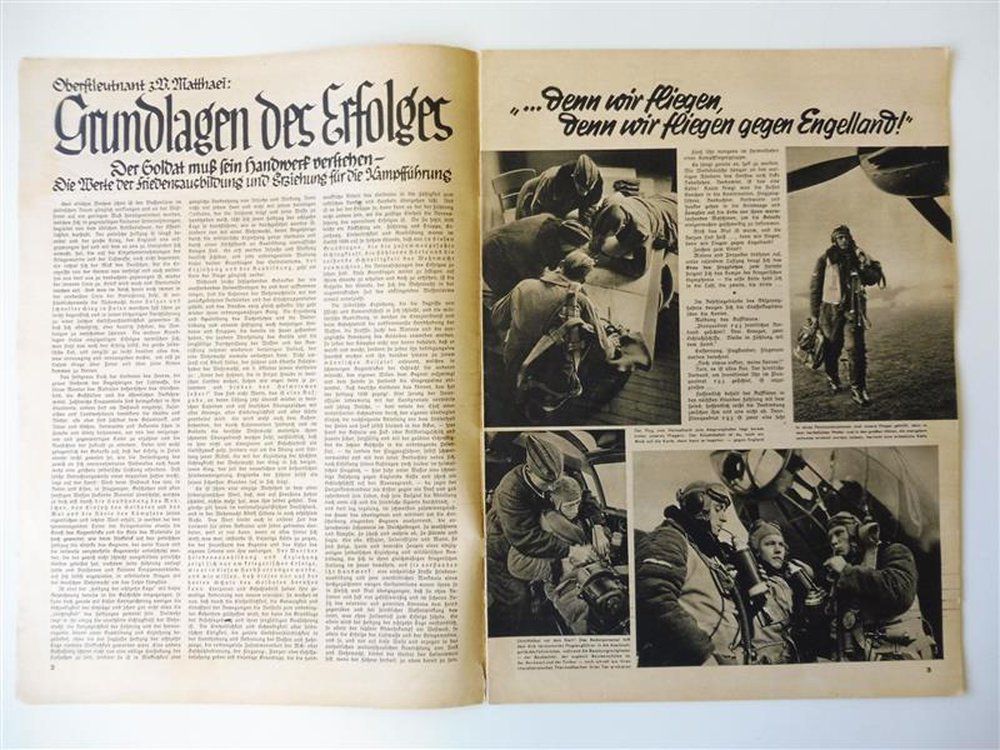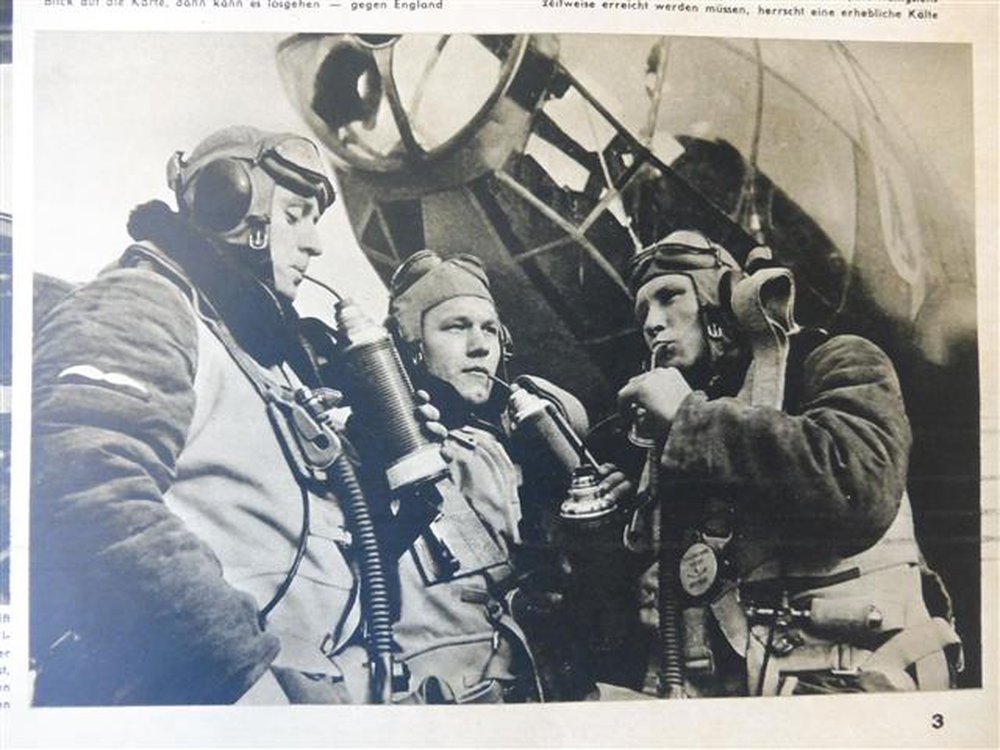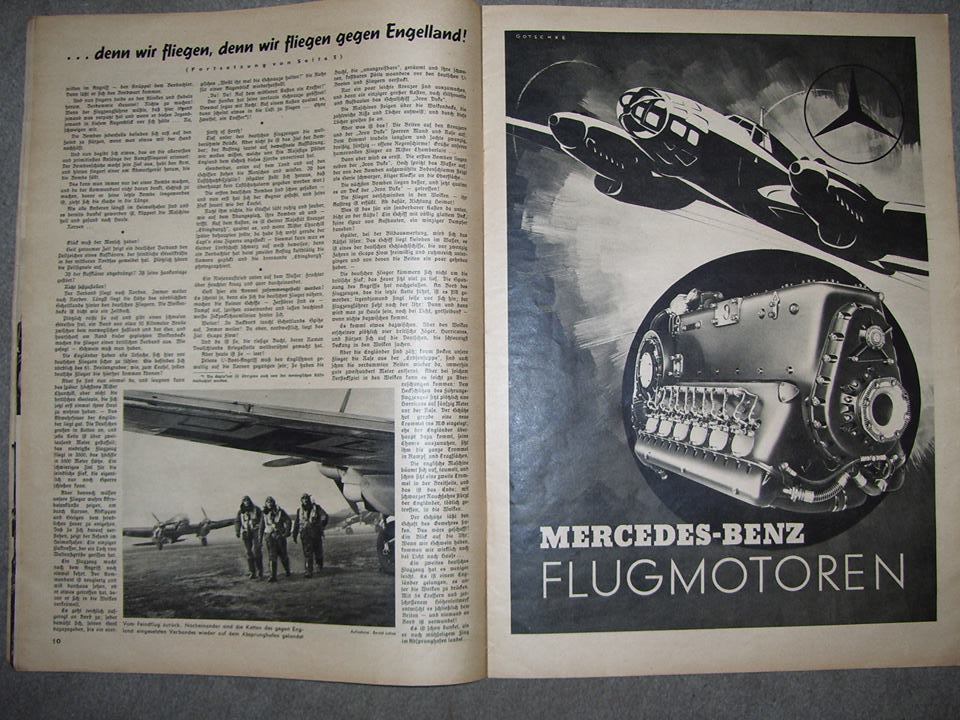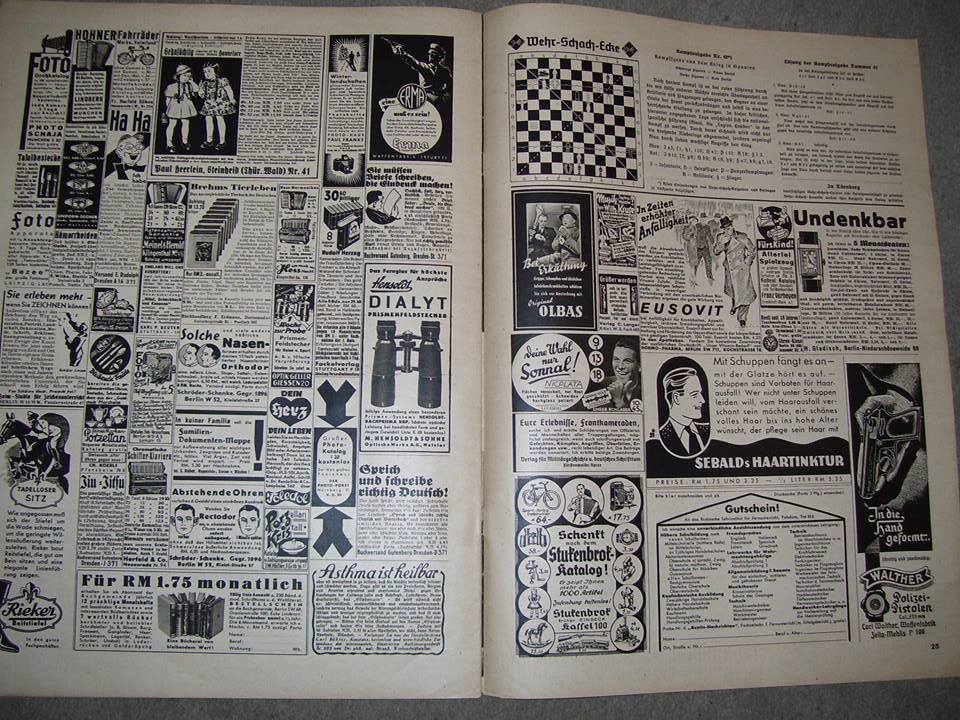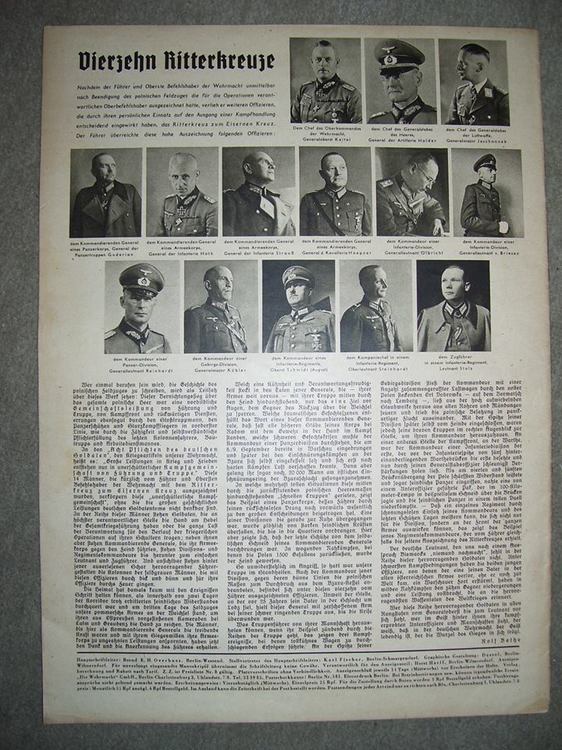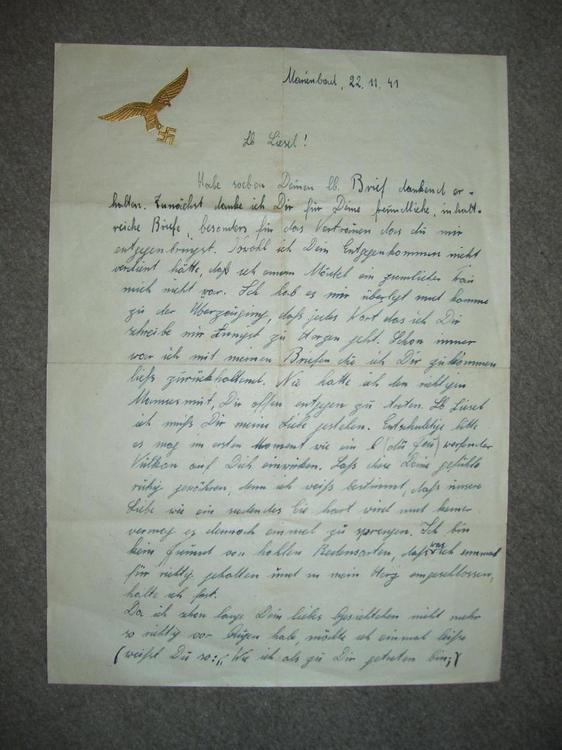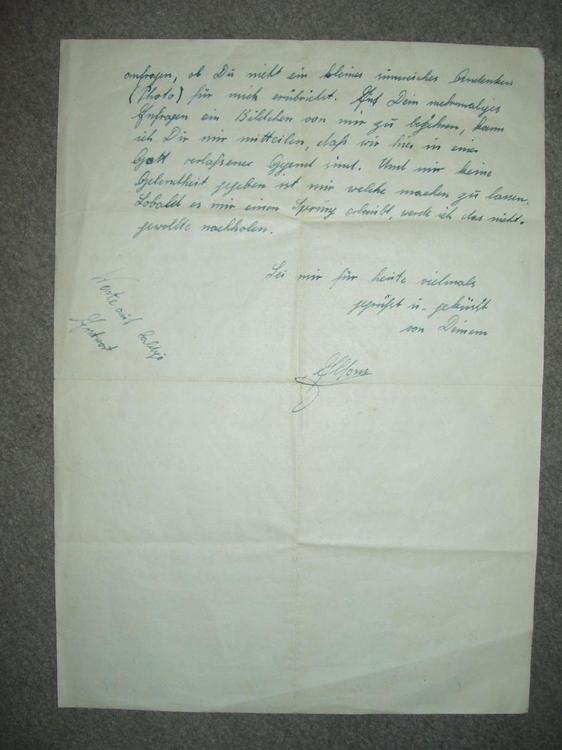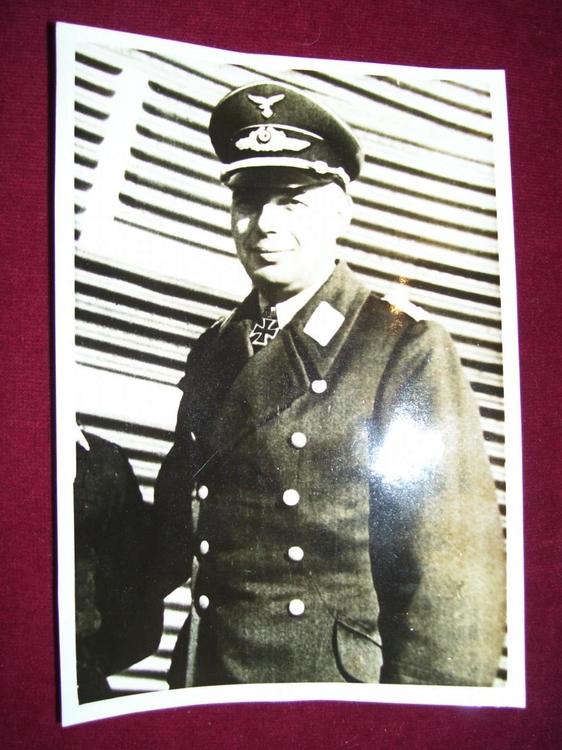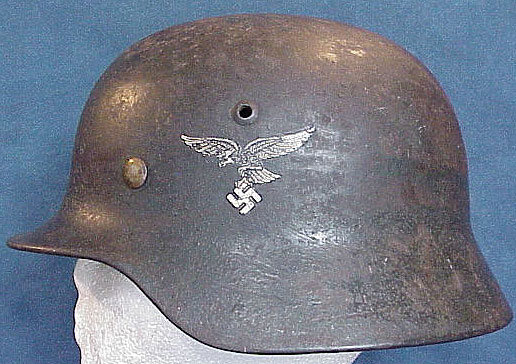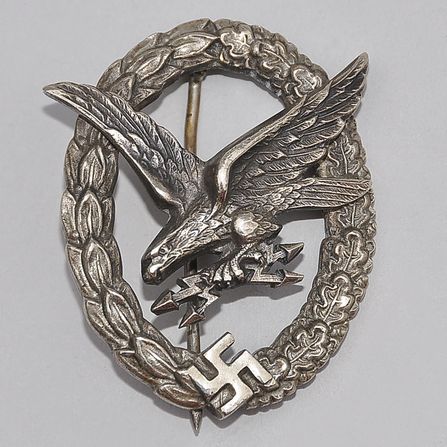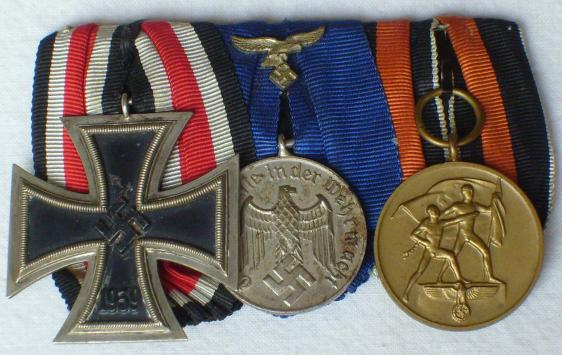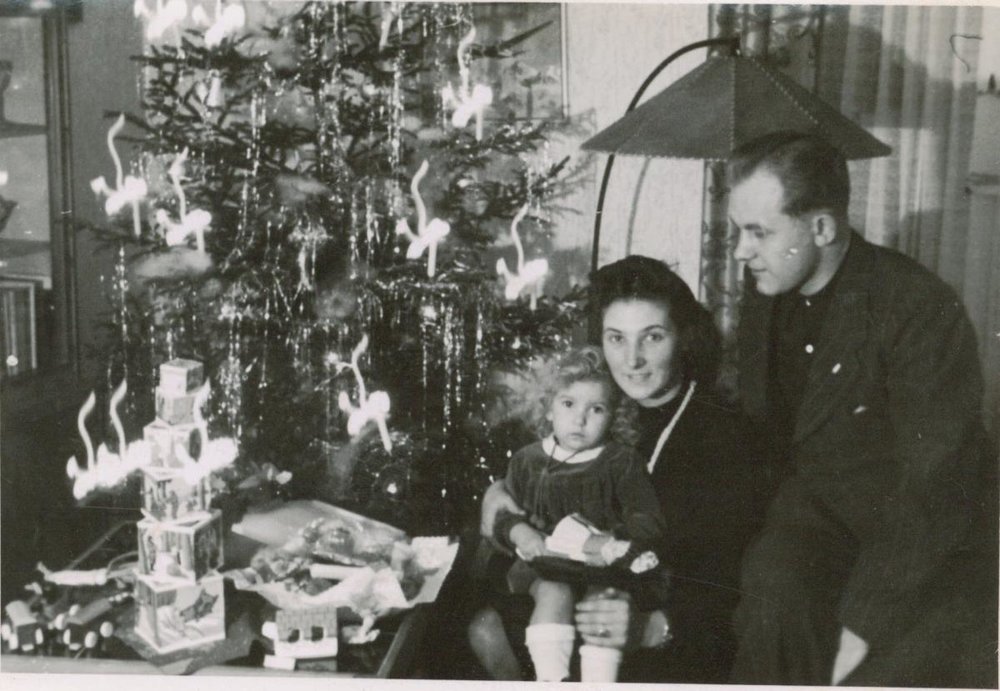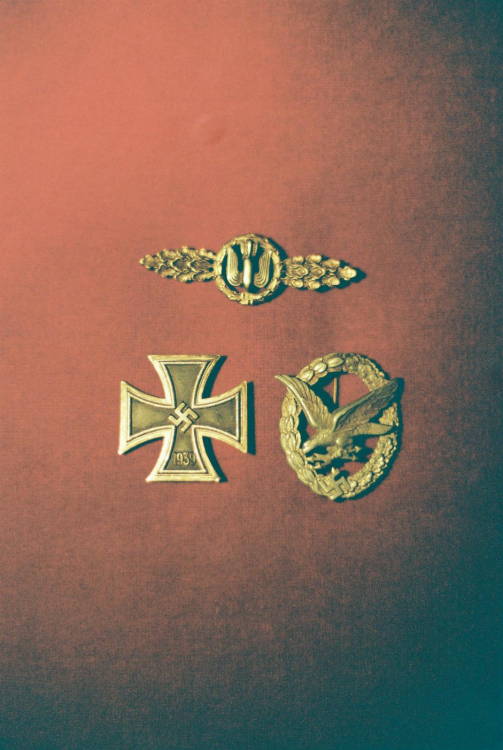Search the Community
Showing results for tags 'luftfahrt'.
-
Unteroffizier Walter Neusüß posted missing, 29.5.1940 This is an original document dated 19.6.1940. It was given to me personally by Liesel Paulmann (née Gottwald, gesch. Neusüß) on 19.6.2006 - 66 years after it was written. The document is addressed to Liesel Neusüß, sent by Luftgaupostamt Hamburg I, Dienststelle der Luftpostnr. L 26 700. It is signed by a Leutnant and commander of the "remainder" - name Abenhausen The addressee was at Hamburg 43, Tarnowitzer Weg 10 Liesel Neusüß was living there at the time with her parents, Alfred and Martha Gottwald. The house was later bombed out in 1943. Most personal possessions were lost. Later, Liesel was safely living in Langenlebarn, (Luftkriegsschule 7) in the Fliegersiedlung. Hamburg 43 no longer exists, it is now 22049 Hamburg (Dulsberg). The text: Dienststelle der Feldpostnummer Den 19.6.1940 L 26 700 Luftgaupostamt Hamburg I An Frau Neusüß Hamburg 43 Tarnowitzerweg 10 Durch Mitteilung des RLM (Reichsluftfahrtministerium), erfährt die Staffel, dass Ihr Mann in Schweden interniert ist. Weitere Angaben können im Moment nicht gemacht werden, da der Aufenthaltsort nicht bekannt ist. Heil H i t l e r ! Abenhausen Leutnant und Restkommandoführer Translated: Through information of the RLM (Reichs Air Ministry), the Wing has learned that your husband has been interned in Sweden. Further details can not be made at the moment, as his whereabouts is not known. HH etc. Abenhausen A nice old document from the family, about the only thing left from the old days, unfortunately has been punched at some time, but otherwise in good condition. Further photos are from an old period magazine from around early 1940, unfortunately cover and some pages missing, but the central article is about The raids over the North of England, Scotland, incl. Scapa Flow and Firth of Forth. It is known that these raids took place between mid October 1939 and January-February 1940, possibly also March. It is not metioned which squadron took part, and no personal names, but the family recognised Walter Neusüß and therefore this magazine was part preserved for so many years. It is probably the magazine Die Wehrmacht, but not certain. The next photo shows three airmen in front of their Heinkel He-111, taking a sip of tea from their thermos flasks. The man in the middle is Unteroffizier Walter Neusüß. Note the heavy flying gear and the thick dark flight overalls (Winter period). The other two men are unknown, but later W.N. flew with Oblt. Egon schmidt (Pilot), Fw.Walter Lippe Uffz. Herbert Ranscht (+) The flight from, presumably Lübeck-Blankensee to Firth of Forth and Scapa Flow, was a very long and hazardous flight, undertaken partly in darkness. The reconnaissance aircraft which preceeeded them, disappeared and was never heard from since. There must have been a great feeling of fear and tension throughout. No wonder Walter Neusüß flew for the last time at the end of 1941, and had ground duties the following year. The third photo shows the crew on the way to their aircraft, the man in the middle, is again, Walter Neusüß.. (orig. photos by Bernd Lohse of R.L.M.) N.B.: Uffz. Neusüß went missing after his aircraft was attacked by a Hurricane whilst flying near Rombakken Fjord, near Narvik. The crippled aircraft made a forced landing near Beisfjord, 30 km from Narvik. Herbert Ranscht died in aerial combat. The aircraft was set ablaze. The remaining crew were briefly captured by French troops, but managed to escape and crossed the Swedish border, where several days later in Sjangeli, they were taken into internment, probably held at Kiruna, until returning on 12th July 1940. Walter Neusüß was sent straight to Kampfgeschwader Gen. Wever No.4 Signature: Abenhausen Walter Neusüß (centre) Walter Neusüß (centre)
-
x Oberleutnant Oswald Bölcke and Leutnant Max Immelmann amongst their comrades. Front row: Salffner, Meding, Lt.Albert Oesterreicher, Bölcke, Hptm. Hermann Kastner, Lt. Max Immelmann, von Krause, Lt. Ernst Hess Back row: Lt. Max Mulzer, von Schilling, Oblt. Maximilian von Cossel, Fromme, Oblt. von Gusnar Taken the last day on which Bölcke and Immelmann together in the same group. Bölcke was despatched the next day for preparation for the Verdun Offensive. He was in Douai in June for the funeral of Max Immelmann + 18.6.1916 Oswald Bölcke, a commemorative postcard, 40 Victories Hauptmann Oswald Bölcke (Boelcke) *19.05.1891, Giebichenstein b. Halle a/d Saale +28.10.1916, Bapaume, fatal accident Pour le Mérite, 12.01.1916 (Telegraphen-Bataillon 3) Oberleutnant Max Immelmann * 21.9.1890, Dresden + 18. 9.1916, Annay, Pas-de-Calais Pour le Mérite, 12.1.1916 (Eisenbahn-Regt.2) Oberleutnant Max Ritter von Mulzer, Führer, Flieger-Abteilung 32 *3. July 1893, Kimratshofen +26. September 1916, Valenciennes 9. July 1916 Pour le Mérite (Chevaulegers-Regiment 8.) Original period photo print Reverse, gelaufen A later copy Richthofen in the peacetime uniform, Kriegskarte, Probably licensed from Sanke Sanke postcard of Rittmeister Manfred von Richthofen. These were published in large quantities and each photo had an order number, which can be seen at the front of the card as well as the manufacturer's logo and the name of the person depicted, very collectable, and these cards can reach high prices, especially when there is an original autograph of the person depicted. This particular photo is well known and has been featured in many biographies of Richthofen. Not known when this portrait was taken, presumaby after December 1916 (Pour le Mérite, 12. January 1917) and before 21. April 1918. Cards printed after that date bore a small cross after the name. In the photo he is wearing the uniform of his old regiment, Ulanen-Regiment 1, along with the military pilots badge, Iron Cross 1st and 2nd class and the Ordre Pour le Mérite. There are many various other photos of Richthofen by Sanke and by other photographers and publishers, as he was very popular. To the bottom left hand corner of the picture is the logo or trademark of Rotophot AG, which was founded in 1912. Sanke and Rotophot were still in business during the 1920s and 1930s. Richthofen with Exzellenz General von Hoeppner, Kommandeur der Luftstreitkräfte A rare set of five cards, numbered 3000-3004 by Verlag Harry Rothenberg, Breslau, not so well known as the Sanke series: Richthofen, this card was printed after 21.4.1918 + Gebrüder Richthofen, Manfred and Lothar, printed after 21.4.1918+ Oberleutnant Lothar Freiherr von Richthofen, Manfred's younger brother * 27.9.1894, Breslau + 4.7.1922, Hamburg Pour le Mérite, 14.5.1917 (Dragoner-Regt.4) Werner Voss, * 13. April 1897 in Krefeld; † 23. September 1917 nördlich von Frezenberg Photo was taken in Richthofen's room. Leutnant Kurt Wolff, * Greifswald, 6.2.1895 + Werwik, 5.9.1917 Pour le Mérite, 4. 5.1917 (Eisenbahn-Regt.4) Leutnant Karl Allmenröder * 3.5.1896, Wald b. Solingen + 27.6.1916, Zillebeke (Feldartillerie-Regt.62) A member of the Richthofen "Flying Circus" who joined Jasta 11 in late 1916 and gained over 30 victories before being shot down on 27. June 1917 near Zillebeke, Belgium. The photo was taken before he gained the Pour le Mérite and which has been added later to the photo. His other decorations as seen in the photo are the Iron Cross 1st class, the Military Pilots Badge and the Oldenburg Friedrich-August-Kreuz 1st class. After the crash he was recovered from the battlefield and buried in his home town Solingen-Wald, where his grave can be seen today. Funeral of Karl Allmenröder, decorations can be seen in this photo (Sanke): The Hausorden von Hohenzollern (Ritterkreuz) can be seen in the photo (centre). The circumstances leading to his death are still unclear. A Canadian ace, Fl./Lt. Raymond Collishaw, R.N.A.S., was accredited with this, however, there is a discrepancy in the dates. Leutnant Emil Schaefer, Jasta 11 Pilot * 7.12.1891, Krefeld + 5.12.1917 bei Ypres 26.4.1917, Pour le Mérite (Jäger-Bataillon 7) Leutnant Gustav Leffers * 2.1.1895, Wilhelmshaven + 27.12.1916, Cerisy Pour le Mérite, 5.11.1916 Leffers reportedly flew a captured French Nieuport Offizier-Stellvertreter Edmund Nathaniel * 18.12.1889, Dielsdorf + 11.5.1917, Bourlon Wood 15 victories Oberleutnant Hermann Göring, last commander of the Richthofen Squadron * 2.1.1893, Rosenheim + 15.10.1946, Nürnberg Pour le Mérite, 2.6.1918 22 victories (Infanterie-Regt.112) Flieger from Flieger-Bataillon 2 in marching order, undated private photo, early uniform. The Flying Ulan - a wartime photo of a soldier of Ulanen-Regiment 13 in peacetime unform, with wartime leather equipment. The large metal scaled epaulettes have been removed and grey cloth shoulder straps of the Fliegertruppe have been added. Unusual photo depicting rear area use of the old peacetime uniform, the Tschapka is worn here without it's field cover.
-
Tulln/Donau, Autumn 1942 This photo was taken in the photo studio, Atelier C.Ridler in Tulln in the Autumn of 1942. This is the Neusüß (Neusüss) family In the picture are Oberfeldwebel Walter Neusüß, 4.7.1914 - 25.8.2009 Liesel (Luise) Neusüß, geb. Gottwald, 8.2.1919 - 4.8.2011 Birgitt Neusüß, 20.11.1941 - 10./11.9.2009 The family lived at the time in the Fliegersiedlung in Langenlebarn, next to the airfield and the Luftkriegsschule 7.
-
Flakhelfer on the roof of a building, Trettaustrasse, Hamburg, 1944 and various other Flakbatteries. As from 1943 schoolchildren and women were called up for service with the homeland flak units Heimatflakbatterien due to the increased requirements during the escalation of the Allied bombing raids on German towns and cities. Most otherwise abled bodied men were already at the front or had become casulaties and manpower was becoming short.
-
Narvik Schild 1940 A Narvik Schild in silver, mounted on a bluegrey Luftwaffe cloth backing. The Narvik shield was awarded to all personnel, who took part in the batte for Narvik between 9th April and 10th June 1940. The shield was produced in silver finish for Heer and Luftwaffe, and in a gold finish for the Kriegsmarine, each with its own appropriate backing cloth. Shields were initially produced in pressed iron with a silver or gold finish, later in Zinc. The award for initatiated on 13th August 1940 by order of Hitler, and the first recipient was Generaloberst Dietl on 15.3.1941, the commander of the Gebirgstruppe. By mid 1941 most awards had been bestowed, in all: Heer: 2755 Luftwaffe 2161 Marine: 3661 The Narvik shield, as most others, is frequently copied. Caution is recommended with examples with too new paper backings. The original series had more of a type of felt behind the cloth backing. (photo by D.Niemann,Hamburg)
-
The Dornier Do 17 has been little mentioned in the past decades, whereas the Ju 88 and He 111 are the most frequently described bombers of WW2. Unfortunately the only surviving example worldwide is the wreck that was found on the Goodwin Sands off the southeast coast of England. It lay on the seabed covered with sand for nearly 70 years until it could be raised and recovered some years back, and now undergoing conservation at RAF Cosford. The condition is such, that it can be no longer restored for normal display, but has undergone conservation for several years to stabilise the aluminium and other materials. It will therefore be displayed in future in it's wrecked condition. This operation cost more than a halb a million pounds, but was considered worthwhile to preserve an important heritage and reminder of the Battle of Britain, where this was one of the three principal bombers used at the time. The Do 17 was sometimes know as the Flying Pencil due to it's long elegant fuselage, however, by 1940 generally outdated, it proved to be insufficient in it's role and was replaced after 1941 by the Ju88. The bomb load carried was limited and the armament insufficient.
-
Luftwaffe Promotion Document Bestallungs Urkunde for a Feldwebel raised to Oberfeldwebel for Hans Holzner, Flugzeugüberführungs-Geschwader No.1 (Süd), based in Neubiberg near Munich, dated 27.7.1943 and signed by a Major Fachner (?), acting as a regimental commander, signature not quite legible. Document has the old style first pattern Luftwaffe eagle, older stocks of forms were always to be used up in order to save material. The quality of the paper used was not always the best, due to wartime shortages. The Flugzeugüberführungsgeschwader had the task of delivering aircraft to a set destinatiion, especially involving the delivery of new aircraft from the production to an airfield, where required. The recipient of the document could well have been a pilot, or perhaps maintenance personnel. More info on this unusual unit can be found in internet. (8.2.2016)
-
Finally found the magazine I have been looking for for years. As I had only been able to photograph the remaining pages of a partly surviving copy, I was not certain which publication or issue. For a long time I suspected it could be the magazine "Die Wehrmacht" (publ. by Oberkommando der Wehrmacht), and was either late 1939 or at the latest May 1940. This I discovered last week at an internet address in Speyer (Rheinland-Pfalz, city with a famous romanic cathedral). The magazine turned out to be issue 23 from 8. November 1939 of Die Wehrmacht. The reason for my interest was the article about Kampfgeschwader 26 and Walter Neusüß, who is depicted in the photos, some of which I include here, as also appeared in previous articles under his name. Walter Neusüß is the man in the middle of the group of 3 airmen. The pages of adverts from the period are also very interesting. The back page shows the first 14 Ritterkreuze awarded after the outbreak of war. Some names will be familiar to the readers. The magazine appeared twice monthly and was discontinued as from about mid 1944. (8.5.2017) Centre, Walter Neusüß Centre: Walter Neusüß
-
A wartime letter, dated 22. November 1941 from Alfons in Marienbad (Sudetenland) to his Liesel. Some folds on very lightweight quality paper with a gold embossed Luftwaffe eagle first pattern, has survived in very good condition. Alfons does not seem to enjoy staying in Marienbad, which he claims is very boring and provincial. He was obviously stationed there with the Luftwaffe. Unfortunately no envelope or details of addressee, apart from first names. Obtained some years ago from an address in England, obviously brought there as a souvenir.
-
Original press photo of Oberst Robert Fuchs, Kommodore of Löwengeschwader - Kampfgeschwader 26 from 29. September 1939 till 15. October 1940. He received the Ritterkreuz from Hitler on 6. April 1940 for the outstanding services of his squadron with its attacks on shipping in the North Sea and the Channel. Unteroffizier Walter Neusüß also took part in these actions, later promoted to Oberfeldwebel. See previous related topics. The text to the rear of the photo is: Kommodore des Löwengeschwaders mit dem Ritterkreuz ausgezeichnet. Der Führer und Oberste Befehlshaber der Wehrmacht verlieh Sonnabend dem Oberst Fuchs, dem Kommodore des bekannten Löwengeschwaders, das Ritterkreuz zum Eisernen Kreuz. Oberst Fuchs (u.B.) wurde diese höchste Auszeichnung zuteil in Anerkennung der Kampfleistungen seines Geschwaders, das durch seine kraftvollen Angriffe gegen die britische Seemacht sich besonders hervorgetan hat. 7.4.40. PK. F 508 Wb. "KG" Es ist zu nennen: Foto: PK.-Ruge (Weltbild) "Fr.OKW" The photo was apparently the copyright of the publishers Weltbild Verlag, which still exists today (Augsburg). Ruge was probably the photographer. "Fr.OKW" probably stands for "Freigabe durch die OKW" - passed by OKW censor. (31.1.2017)
-

Luftwaffe Steel helmet M.35, first pattern - double decal
Fritz posted a topic in Helmets and Headgear
Another nice recent acquisition is this nice early type Luftwaffe M.35 helmet with first pattern eagle (double decal). Condition overall satisfactory, skull and paintwork with aging and weather damage as if exposed to the elements at some time. Original black leather liner has shrunk somewhat, no chinstrap. Both decals are in a very good condition, with just some abrasions, esp. to the national colours. The helmet is a small size and is marked ET62, being an overall size of 62cm, headsize about 53/54. Typically this has the early brass liner rivets. See illustration -
Luftwaffe Badge for qualified Radio Operator, known as Bordfunkerabzeichen, or sometimes as Fliegerschützenabzeichen mit Blitzbündel. This example by C.E.Juncker, Berlin SW. The badge is an earlier make of so-called German Silver or Neusilber and in fine quality by this premium maker of long standing. Later examples were made of Zink. Introduced on 26th March 1936 for qualified personnel, it was also awarded to unqualified personnel, who had distinguished themselves in action over so many missions. This was also awarded to flight mechanics and air gunners until December 1941, when a new badge without the lightning strokes was introduced
-
The Iron Cross has no traces of any silvering (cant see maker as ring is hidden under ribbon), but is made of white metal (Neusilber) and the iron core has a thin black lacquer showing no traces of rust. Is however, an awarded piece and not a second. The Dienstauszeichnung is iron with most of silvering present, just a few little rust stains between some ot lettering of Wehrmacht and is mounted with the Luftwaffe eagle second pattern, which appears to be made of zinc with most of hard silverplate present, which would deem it a midwar variation. The Sudetenland medal has lost some of its finish, but is solid bronze, and these were only awarded up till early 1941. It has no Prague Castle bar. These are on a black cloth backing with a wide needle pin and hook. Original wearer not known, but could have been an airman, as this was a typical combination for airmen, who had served since at least 1938. Oberfeldwebel Neusüß of KG26 and KG4 also had this combination of decorations, but there is no photo of him wearing such, just the simple small ribbon bar in several photos, the ribbons of which are clearly recognisable. Hard to find in this combination nowadays. Many servcemen never got their medals mounted and just wore the ribbon bar. In Germany it has been prohibited since 1945 to wear any decorations. Certain decorations were permitted as per the 1957 laws, and these being remanufactured without swastikas. The Sudetenland medal is however, prohibited in any form, as are many other decorations. These laws now also apply to Austria and France. However, there are hardly any more veterans left to comply to this.
-
Weihnachten, 24. Dezember 1943 Picture above reads on reverse side "The three Langenlebarner under the Christmas Tree, 24.December 1943" Depicted is Birgitt Neusüss (20.Nov.1941-10./11.Sept.2009) with her parents in the "Luftwaffe settlement" at the flying field Langenlebarn near Vienna (Luftkriegsschule 7, Tulln-Langenlebarn) Her father was Radio Operator (Bordfunker) and reached the rank of Oberfeldwebel, at first with Legion Condor in Spain (?), then K.G.26, K.G.4 and as from May 1942 with LKS 7. He flew over 283 missions and had the iron cross 1st class, the Bomber Crews Clasp in Gold (Frontflugspange für Kampfflieger in Gold), Narvik Shield, etc. Became a prisoner of war near Salzburg/Austria, returning from American captivity around the end of 1945. He passed away on 25 August 2009, just two weeks before his daughter. He spent most of his spare time with his family, and preferred to do so in civil clothing.
-
Liesel Neusüss in Königsberg, February - April 1942 Walter Neusüß flew until around end of 1941. After sustaining a further wounding, he was from around January till end of April 1942 in or near Königsberg, firstly for treatment and recovery and then presumably for further training. The wounds he had probably received on the Eastern Front, at the time Kampgeschwader 4 was operating in various sectors in Russia. After the wounds he was no longer with Kampfgeschwader 4. From February till April 1942 his wife came from Hamburg to be nearby. The little daughter, Birgitt, stayed with the grandparents Alfred and Martha Gottwald in their home in Tarnowitzer Weg 10 in Hamburg-Dulsberg. Liesel stayed in accomodation with the family of Adalbert Bedarf in the Kurfürstendamm 3. A photo records this, and can be seen on this article. Walter and Liesel were able to visit some interesting places in Königsberg, such as the castle, Königsberger Schloss. There are a couple of photos which record their visit to that place together with a comrade and his wife (may be posted later) At the beginning of May 1942 the family (all three) moved to Langenlebarn into the family quarters at the airfield and Luftkriegsschule 7 (Tulln). Walter had his duties as Peilfunkleiter and Leiter der Flugberatungsstelle, retaining his rank of Oberfeldwebel. At the same time, he had much more time for wife and daughter and all spent a few happy years, before the evacuation on 2nd April 1945. The photo shows Liesel Neusüß with her host family in Königsberg, Kurfürstendamm 3, early 1942 The family of Adalbert Bedarf ran an inn with restaurant. They are recorded in a census for the year 1934 as being at that address and with that profession. The fate of that family in 1944/45 is not recorded. The Russians have occupied the area and are still there today (Kaliningrad). The city of Königsberg was totally destroyed and the historic castle was burned out in July 1945 and demolished by the Russians in 1950. All that remains are the cellars, where the famous Amber Room or Bernsteinzimmer is thought to have been kept. This has also disappeared without trace till today. Last picture shows the courtyard and cellar of the Königsberger Schloss. The cellar was a well-known restaurant known as the "Königsberger Blutgericht". This photo from early 1942 shows Walter Neusüß and a comrade with their wives.
-
Here is an absolutely perfect ribbon bar for a soldier of the Luftwaffe, possibly non-combattant or ground personnel. From left to right, Kriegsverdienstkreuz 2nd.class with swords (swords are here bronze), Four Year Service decoration, Sudetenland Medal with Prague Bar and a Bulgarian Service cross with swords - often seen awarded to Germans, especially with the Luftwaffe. This ribbon is pale blue with silver metallic thread edge stripes. Increasingly rare to find. The bar is backed in Luftwaffe bluegrey cloth and with a thick pin.
-
A typical Luftwaffe airmans decorations - Iron Cross 1st Class 1939 Eisernes Kreuz, 1.Klasse, 1939 - Radio Operators Badge Bordfunkerabzeichen, also known as Fliegerschützenabzeichen mit Blitzbündel - Clasp for Bomber Crews in Bronze Frontflugspange für Kampfflieger in Bronze The EK shown has no makers mark, and the catch for the pin has been expertly repaired at some stage. The recipient has had his initials and the date of the award very stylishly engraved at the back, being: P.S. 4.I.1941 this done in a rope-like style of gothic script. Possibly researchable. The finish is completely worn off the swastika, and the whole decoration shows light wear. The Radio Operators Badge has lost a lot of its finish and is a Zinc example by B&N,L Berg & Nolte in Lüdenscheid, the pin has been repaired and the eagle has come adrift at some time and been crudely soldered onto the wreath, with solder marks to the rear of the badge, otherwise a reasonable example from the front. The Bomber Clasp is of earlier bronze metal with a german silver centre piece riveted as always. The pin construction to the rear is of the usual cokebottle variety and is also of the early german silver type. There is no makers mark. This decoration was inaugurated on 30th January 1941 and was awarded in three classes, bronze for about 20 missions, silver for 60 missions, and gold for 110 missions. Additional hangers in gilt with a number were also awarded as from 200 missions. Later examples were made in Zinc, which mostly loses its finish in the course of time.





